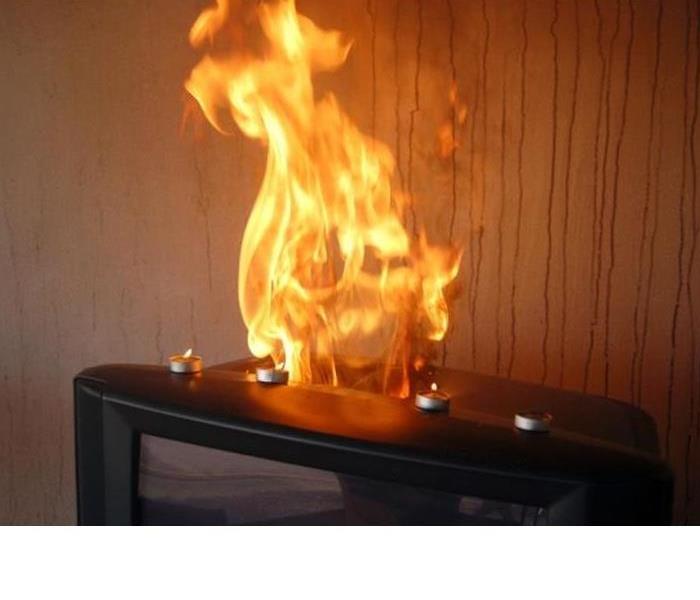Candle Fire Tips and Facts
7/18/2017 (Permalink)
The winter holiday season is upon it is traditionally a festive time of year filled with colorful decorations and family gatherings, it is too often a time of tragedy and loss as well. National Fire Protection Association (NFPA) statistics indicate that 28% of all home fires and 35% of home fire deaths occurred between the months of December, January, and February. These winter fires result from a variety of sources. From 2009-2013, U.S. fire departments responded to an estimated 9,300 home structure fires that were started by candles. These fires caused 86 deaths, 827 injuries and $374 million in direct property damage. And the top three days for home candle fires were Christmas, New Year's Day, and Christmas Eve.
Facts and figures
During the Six-year period of 2009-2014
- Candles caused 3% of reported home fires, 3% of home fire deaths, 6% of home fire injuries, and 5% of the direct property damage in home fires.
- Candle fires occurred in these rooms: 44 percent of candle-sparked fires start in bedrooms, , 19 percent in living rooms, family rooms or dens, 11 percent in bathrooms, seven percent in kitchens, and four percent in dining rooms.
- Roughly one-third (36%) of home candle fires started in bedrooms. These fires caused 32% of the associated deaths and 47% of the associated injuries.
- Falling asleep was a factor in 11% percent of the home candle fires and 30% of the associated deaths.
- On average, 25 home candle fires were reported per day.
- More than half (58%) of home candle fires occurred when some form of combustible material was left or came too close to the candle.
- December is the peak time of year for home candle fires. In December, 11% of home candle fires began with decorations compared to 4% the rest of the year.
Here are some candle safety recommendations:
- Don't leave them unattended. If leave a room, extinguish the candle and re-light it when you return.
- Maintain a two-foot circle of safety around a lighted candle. It shouldn't be near clothing, books, curtains, etc. A breeze from an open window or forced hot air from a heat duct can, for instance, sweep a curtain into the proximity of the flame.
- Use candles with a sturdy base
- Trim the wick to one-quarter inch. That prevents the flame from becoming too large.
- Keep lighted candles out of areas where they can be knocked over by kids or pets. People like to put candles at the end of a coffee table, but that's where people reach over to get something, and their clothes can come in contact with a flame.
- Some candles require special attention, such as those with combustible material embedded in them. When the candle burns down, a little plastic fish, for example, becomes exposed to the flame, and it may ignite.
We here at SERVPRO of Southern McHenry County wish you the Happiest of the Holidays.
- Source: National Fire Protection Association






 24/7 Emergency Service
24/7 Emergency Service
